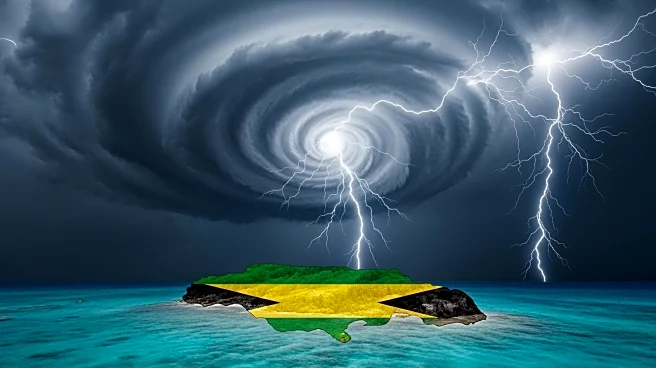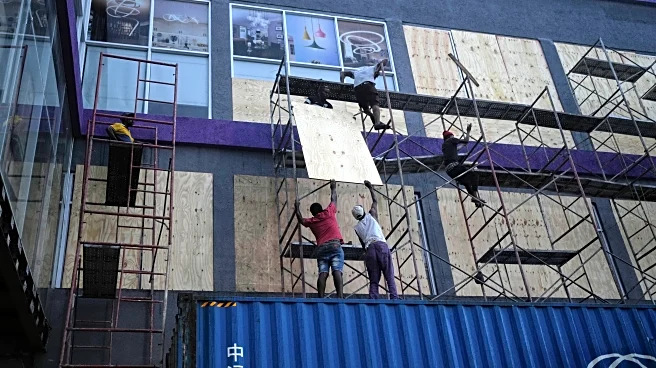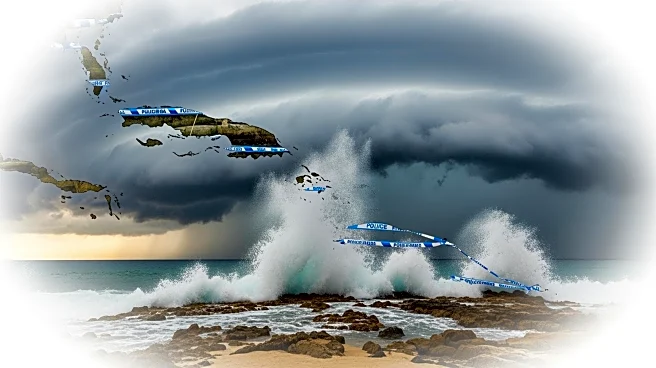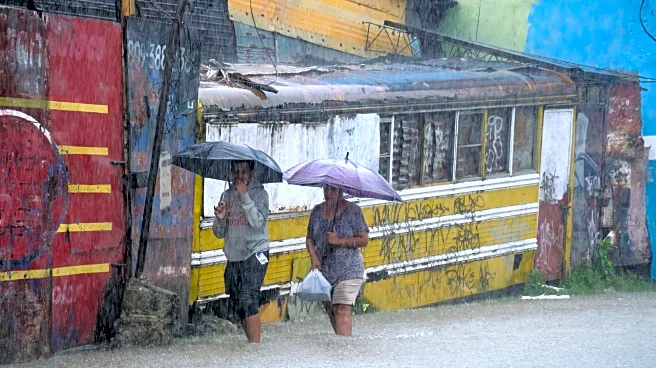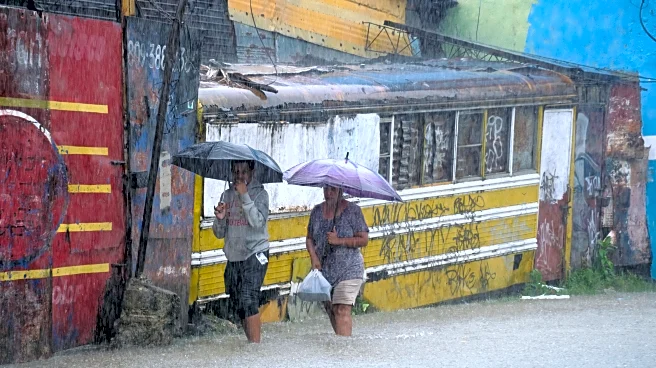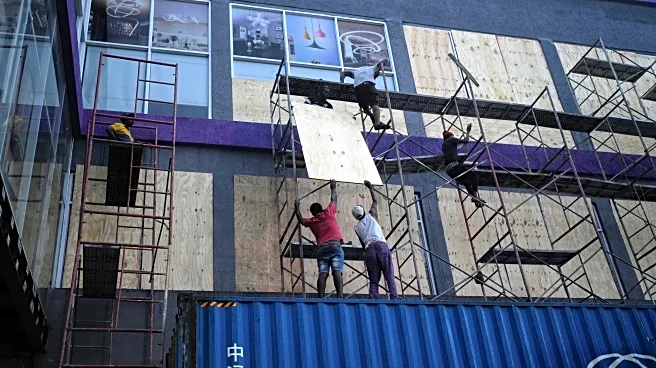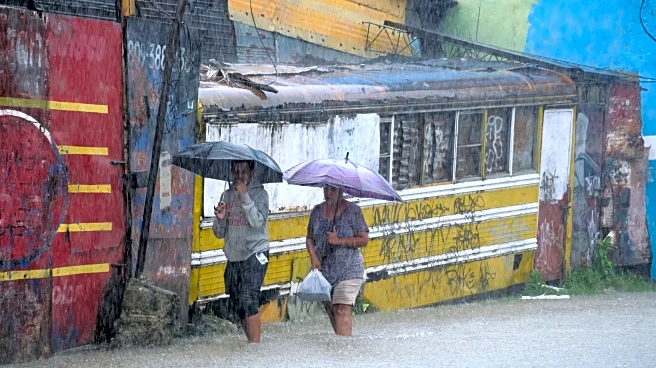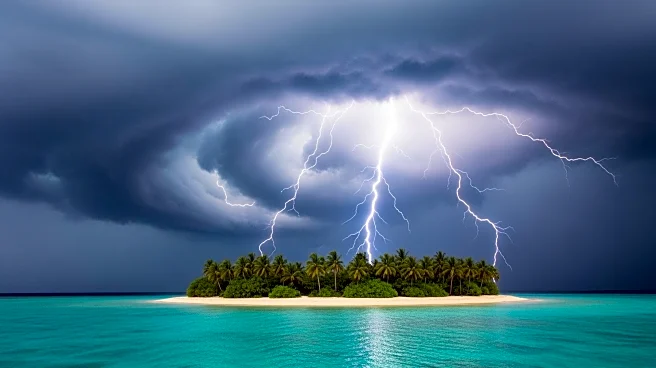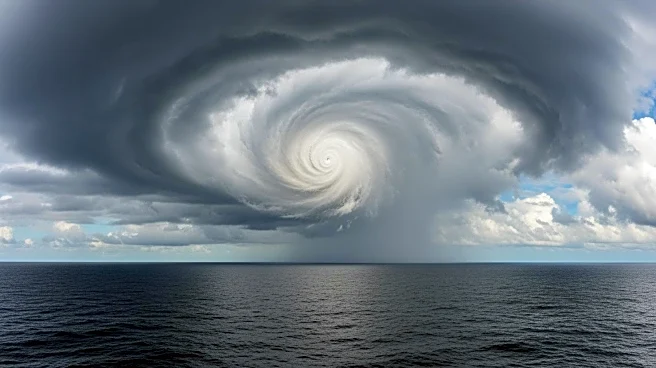What's Happening?
Hurricane Melissa has intensified into a Category 5 storm, posing a severe threat to Jamaica and other Caribbean nations. The U.S. National Hurricane Center (NHC) has issued warnings of catastrophic flash
flooding, life-threatening landslides, and extremely strong winds. The storm, which is the most powerful to hit the region since Hurricane Gilbert in 1988, is expected to bring between 15 and 30 inches of rain to Jamaica, with some areas potentially receiving up to 40 inches. As of early Monday, the hurricane was located 130 miles southwest of Kingston, Jamaica, with sustained winds of 160 mph. The Jamaican government has urged residents to seek shelter, with 218 people already in shelters. The storm has already resulted in four fatalities, three in Haiti and one in the Dominican Republic.
Why It's Important?
The intensification of Hurricane Melissa into a Category 5 storm is significant due to the potential for widespread destruction in the Caribbean. Jamaica, in particular, faces the risk of severe infrastructure damage and life-threatening conditions. The storm's impact could lead to long-term economic challenges for the affected regions, as recovery from such extensive damage often requires substantial resources and time. Additionally, the humanitarian impact is considerable, with communities at risk of isolation due to flooding and landslides. The situation underscores the vulnerability of Caribbean nations to powerful hurricanes and the importance of disaster preparedness and response strategies.
What's Next?
As Hurricane Melissa approaches Jamaica, the focus will be on emergency response and relief efforts. The Jamaican government and international aid organizations are likely to mobilize resources to assist affected communities. The NHC has indicated that the storm will weaken slightly upon interacting with Jamaica but is expected to remain a major hurricane as it moves towards southeastern Cuba and the Bahamas. Monitoring and preparedness efforts will continue in these regions, with potential evacuations and shelter provisions being critical components of the response strategy.


